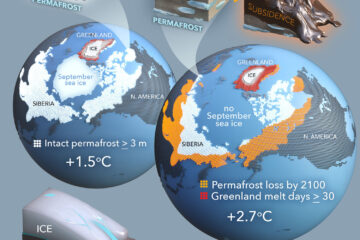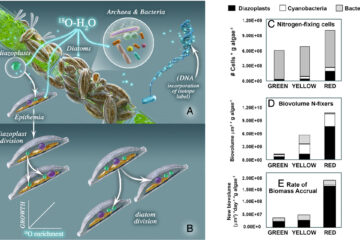Thawing permafrost increases old soil and autotrophic respiration in tundra: Partitioning ecosystem respiration using δ13C and ∆14C
Ecosystem respiration (Reco) is one of the largest terrestrial carbon (C) fluxes. The effect of climate change on Reco depends on the responses of its autotrophic and heterotrophic components. How autotrophic and heterotrophic respiration sources respond to climate change is especially important in ecosystems underlain by permafrost. Permafrost ecosystems contain vast stores of soil C (1672 Pg) and are located in northern latitudes where climate change is accelerated. Warming will cause a positive feedback to climate change if heterotrophic respiration increases without corresponding increases in primary production. We quantified the response of autotrophic and heterotrophic respiration to permafrost thaw across the 2008 and 2009 growing seasons. We partitioned Reco using Δ14C and δ13C into four sources–two autotrophic (above – and belowground plant structures) and two heterotrophic (young and old soil). We sampled the Δ14C and δ13C of sources using incubations and the Δ14C and δ13C of Reco using field measurements. We then used a Bayesian mixing model to solve for the most likely contributions of each source to Reco. Autotrophic respiration ranged from 40 to 70% of Reco and was greatest at the height of the growing season. Old soil heterotrophic respiration ranged from 6 to 18% of Reco and was greatest where permafrost thaw was deepest. Overall, growing season fluxes of autotrophic and old soil heterotrophic respiration increased as permafrost thaw deepened. Areas with greater thaw also had the greatest primary production. Warming in permafrost ecosystems therefore leads to increased plant and old soil respiration that is initially compensated by increased net primary productivity. However, barring large shifts in plant community composition, future increases in old soil respiration will likely outpace productivity, resulting in a positive feedback to climate change.


